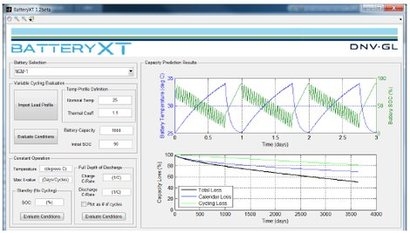
The independent verification tool compiles battery life cycle data and predicts battery degradation under different conditions and duty cycles, providing renewables stakeholders with an objective way to compare the value and reliability of types and brands of energy storage technology. This in turn incorporates the experience of ten years of research and development in energy storage and has been developed in cooperation with industry stakeholders.
Battery XT offers an independent third-party testing and verification of product warrantees and performance guarantees before making a purchasing decision. It can also provide consulting on battery size and chemistry selection, aims to reduce risk and inform purchases and planning for energy storage asset management. The independent verification enables the industry to test at the lowest cost possible, helping stakeholders save time and money by eliminating the need to address individual, customized testing protocols for each vendor.
“As energy storage deployment reaches the gigawatt scale, the market is still challenged to overcome the self-certification approaches of the past” said Davion M. Hill, Ph.D., DNV GL’s energy storage leader, Americas. “No two markets have the same duty cycle and no two batteries have the same performance. This bottlenecks project development because every project requires a unique verification of lifetime. To solve this, we calibrated legacy automotive life prediction models with a minimum dataset. Once tested, batteries can be sized to any duty cycle and developers can scale without waiting on data from suppliers. We have built the world’s only independently created database of Li-on battery performance to help the market deploy faster.”
Rich Barnes, executive vice president and regional manager for DNV GL Energy in North America, added that as the storage market continues to expand, the ability to manage risk at the point of purchase is becoming increasingly important. Battery XT will empower stakeholders to make better purchasing decisions based on objective, third-party testing
DNV GL is also offering an interactive online demo to illustrate the way Battery XT works. Viewers can try three scenarios—fast charge electric ferry, hybrid genset and solar+frequency—by entering sample information such as system size, temperature and initial state of change, and then running a simulator to show how the factors apply. The full service offered on a per project basis is able to tailor even the most complex duty cycle to the customer and their battery.
For additional information:
DNV GL

